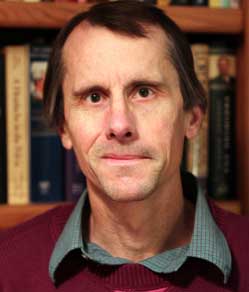
After receiving his PhD degree from the University of Iowa, Dr. Mattson completed a postdoctoral fellowship in Developmental Neuroscience at Colorado State University. He then joined the Sanders-Brown Center on Aging at the University of Kentucky College of Medicine where he advanced to Full Professor. In 2000, Dr. Mattson took the position of Chief of the Laboratory of Neurosciences at the National Institute on Aging in Baltimore. He is also a Professor in the Department of Neuroscience at Johns Hopkins University School of Medicine where he is the director of a course on the Neurobiology of Aging. Dr. Mattson leads a multi-faceted research team that applies cutting-edge technologies in research aimed at understanding molecular and cellular mechanisms of brain aging and the pathogenesis of Alzheimer’s, Parkinson’s and Huntington’s diseases, and stroke. His work has elucidated how the brain responds adaptively to challenges such as fasting and exercise, and he has used that information to develop novel interventions to promote optimal brain function throughout life. He has published more than 800 articles, and has edited 10 books in the areas of signal transduction, cellular stress responses, neurodegenerative disorders and mechanisms of aging. Dr. Mattson has been among the most highly cited neuroscientist in the world during the past 20 years with an ‘h’ index of over 175. He has received many awards including the Metropolitan Life Foundation Medical Research Award, the Alzheimer’s Association Zenith Award, the Santiago Grisolia Chair Prize and the Tovi Comet-Walerstein Science Award. He was elected an AAAS Fellow in 2011. He is Editor-in-Chief of Ageing Research Reviews and NeuroMolecular Medicine, and is a Section or Reviewing Editor for Nature Communications, the Journal of Neuroscience, Trends in Neurosciences, the Neurobiology of Aging, and Aging and Mechanisms of Disease.
Intermittent Bioenergetic and Oxidative Challenges Promote Optimal Brain Function
Mark P. Mattson, Laboratory of Neurosciences, National Institute on Aging Intramural Research Program, Baltimore, MD. 21224. mark.mattson@nih.gov
Humans evolved in environments where food was not continuously available, and so possess robust adaptive physiological and behavioral responses to periods of food scarcity. Emerging evidence suggests that intermittent energy restriction (IER; for example fasting for a period of 24 hours several times each week) and vigorous exercise can increase numbers and strength of synapses and can enhance brain function (cognition, and sensory – motor performance) and mood. The general mechanism by which IER and exercise benefit neurons is by increasing their activation state and energy demand, which results in a coordinated engagement of signaling pathways that promote synaptic plasticity, neurogenesis and cellular stress resistance. The pathways activated by exercise and IF include those involving reactive oxygen species, brain-derived neurotrophic factor (BDNF), mitochondrial biogenesis and stress resistance, DNA repair and removal of oxidatively damaged proteins and organelles (autophagy). Peripheral changes in energy metabolism that occur during fasting and exercise may also contribute to their beneficial effects on the brain. In this regard, the depletion of glycogen stores in the liver triggers the mobilization of fatty acids from fat cells and the production of ketone bodies. Ketone bodies such as beta-hydroxybutyrate provide an alternative energy source for neurons and may also activate signaling pathways that enhance the ability of the brain to cope with stress. Studies of animal models of neurodegenerative disorders (Alzheimer’s and Parkinson’s diseases) and acute brain insults (stroke and severe epileptic seizures) demonstrate robust neuroprotective and neurorestorative effects of IER and exercise. The implications of these findings for strategies to optimize brain function and resistance to injury and disease throughout the life course will be considered. Supported by the Intramural Research Program of the National Institute on Aging.

